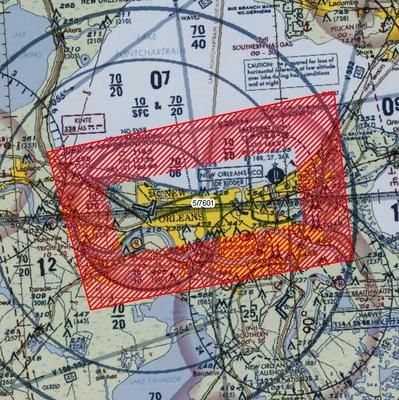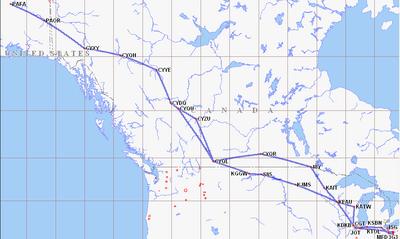In a previous post, the IFR Pilot reflected on a past flight through the Grand Canyon while in Vegas on a business trip. Cleaning the deutritus from the computer, the photographic evidence of said trip was unearthed.I arrived at North Las Vegas Airport to the offices of First Flight Aviation. I chose them based on favorable comments on AirNav.com. My appointment is with Will, one of First Flight's CFIs. He's your typical flight instructor: young, male, full of energy. I'll be flying N623SP, a Cessna 172SP. I logged a bunch of SP time getting my private before buying 78S, so this is familiar territory.After a preflight, we taxi out and takeoff. Climb performance isn't too bad, considering the density altitude. It's easily got to be more than 100 degrees on the tarmac. We skirt the military airspace southeast of VGT and head for the Grand Canyon. The scenery is absolutely spectacular!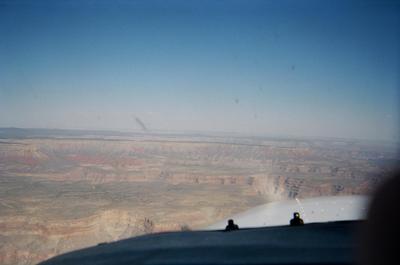
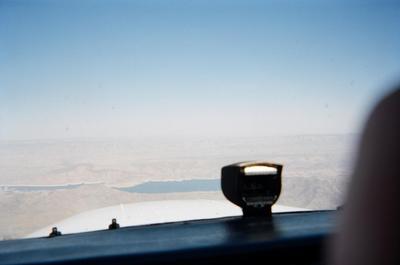

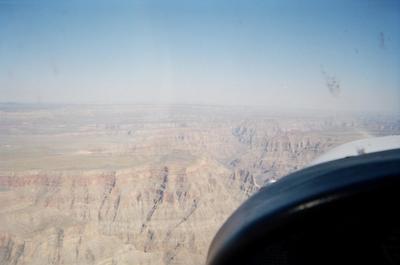
We proceed east, and make our way to Grand Canyon West Airport. Will tells me that the airport abuts the Snake River Canyon where Evel Knievil had the famous Skycycle jump back when the IFR Pilot was Wee Little Wanna Be Pilot. It's not obvious here, but these pictures, taken at the threshold of Runway 35 (I think), show the area in which Evel did his stunt. (Further research shows that this is total bull, as Knievil's jump was in Idaho. Oh well, whatever. It's still awesome to behold this natural beauty.)
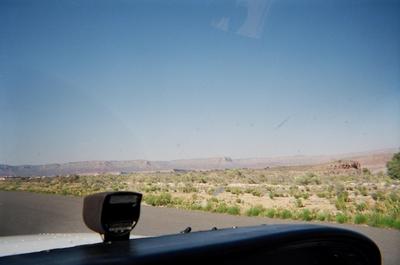

The takeoff plays a few ticks on the IFR Pilot's brain. One minute, we're just a couple hundred feet off the ground. Then, the ground drops away as we cross over the edge of the cliff. Suddently, we're a whole lot higer above ground. Weird.
Anyway, next on the list of sights is Lake Mead. Will decides that the IFR Pilot needs a lesson in low-level flight, and says that we'll make our way down to about 50 feet of the lake floor. Um, ok, are you sure about this? I guess it's kosher. If memory serves, it's Class G airspace and there's not likely to be any structures around that we'll run into. Here's proof that we did the deed:
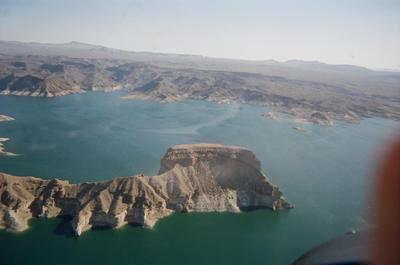
Going lower.
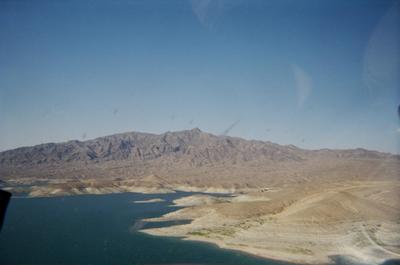
Really low now.
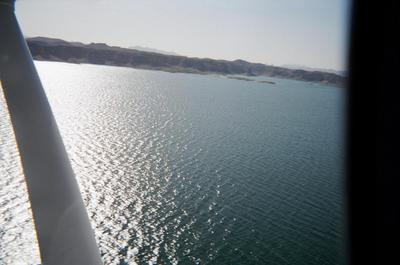
This is about 50 feet or so ALL (above lake level).

Proof that the IFR Pilot was actually flying this low (look out the window):
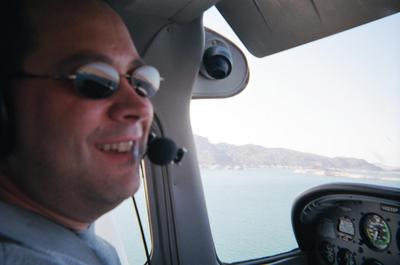
We leave Lake Mead and head for some intriguing rock formations that Will knows. I forget if they had a name. But, as you can see for yourself, they were awesome looking!
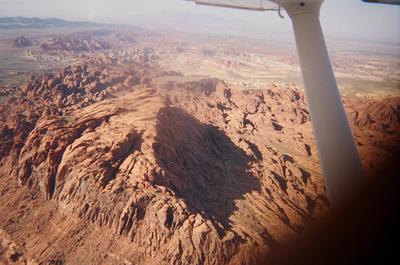
 Next up is Hoover Dam. There's a discrete frequency for flying over the Dam. Yes, yes, you report "Dam Traffic." Yuck, yuck, yuck. What's perhaps a bit more interesting to note is that even in this ear of post-9/11 security
Next up is Hoover Dam. There's a discrete frequency for flying over the Dam. Yes, yes, you report "Dam Traffic." Yuck, yuck, yuck. What's perhaps a bit more interesting to note is that even in this ear of post-9/11 security paranoia restrictions vis-a-vis general aviation, we're still able to circle the Dam and get a bird's eye view of this man-made Wonder of the World.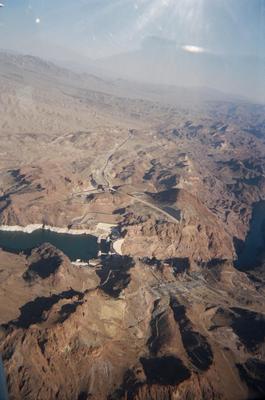

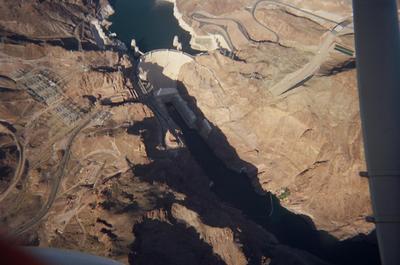 After touring the Dam, we head back for Vegas. We get a vector that clips Henderson's airspace and then, of all things, a vector right over the top of McCarran International. As you can plainly see, the Strip isn't very far from the Airport.
After touring the Dam, we head back for Vegas. We get a vector that clips Henderson's airspace and then, of all things, a vector right over the top of McCarran International. As you can plainly see, the Strip isn't very far from the Airport.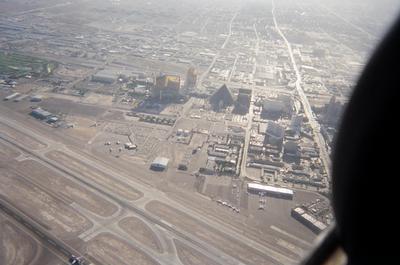 After that, it's a quick hop up to VGT and we put 3SP back to bed. All in all, a great way to end a trip to the Aviation Insurance Association annual convention.Take the IFR Pilot's advice: Next time your in Vegas, rent a plane and do some aerial sightseeing. You will not be disappointed, and the memories will last a lot longer than the 20 minutes at the Texas Hold 'Em table, where you lost enough to pay for the entire flight!!!
After that, it's a quick hop up to VGT and we put 3SP back to bed. All in all, a great way to end a trip to the Aviation Insurance Association annual convention.Take the IFR Pilot's advice: Next time your in Vegas, rent a plane and do some aerial sightseeing. You will not be disappointed, and the memories will last a lot longer than the 20 minutes at the Texas Hold 'Em table, where you lost enough to pay for the entire flight!!!

